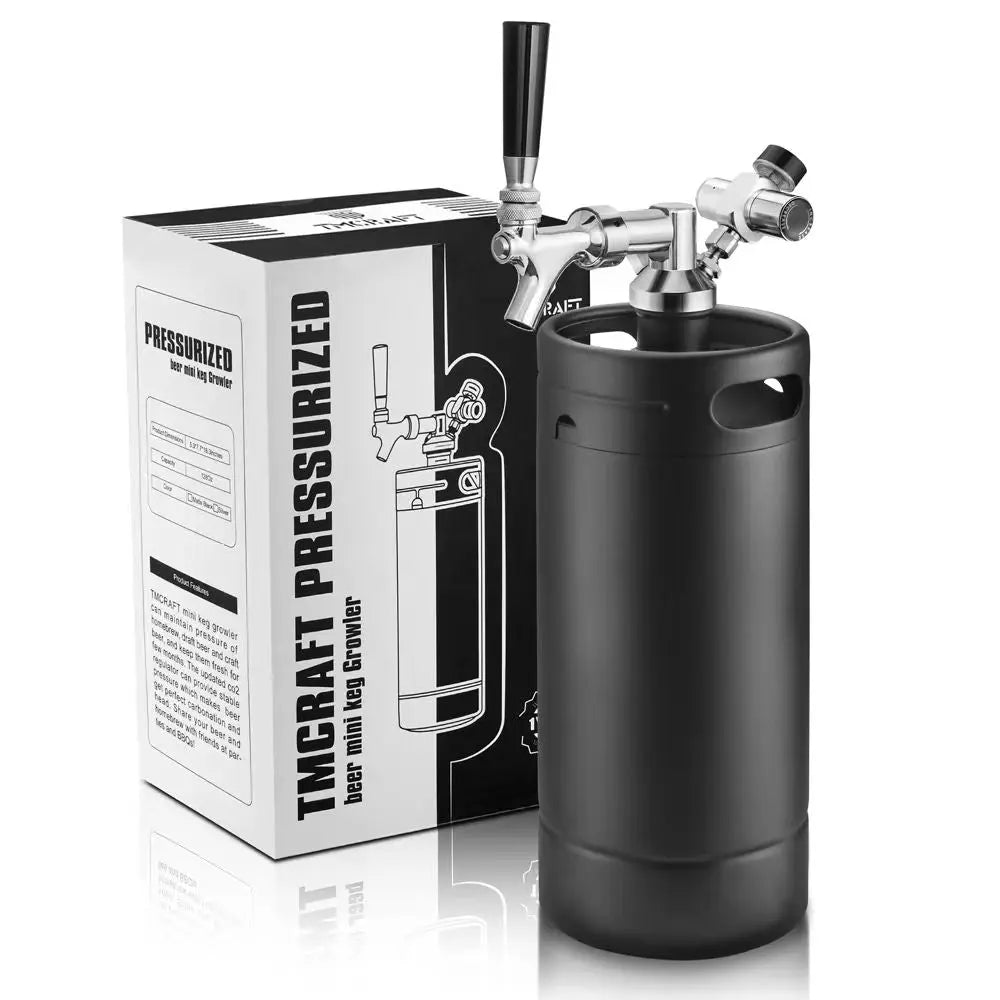
Ball Lock Keg Maintenance Made Simple: Keep Your Draft System Leak-Free
For homebrewers, there’s nothing worse than discovering a CO₂ leak right before serving time. A properly maintained ball lock keg not only keeps your beer tasting fresh but also ensures your kegging system runs efficiently and without waste. The good news? With a few simple steps, you can keep your setup running smoothly and avoid costly CO₂ loss.
This guide will walk you through the essentials of ball lock keg maintenance, how to identify leaks, and easy fixes to keep your TMCRAFT Ball Lock Kegs performing at their best.
Why Maintenance Matters
Your CO₂ system is the heart of your draft setup. Even small leaks can lead to:
- Flat Beer: Without proper pressure, carbonation levels drop quickly.
- Wasted Gas: CO₂ tanks run out faster, adding unnecessary costs.
- Inconsistent Pours: Beer that’s over-foamy or under-carbonated.
Routine checks and maintenance keep your kegging system consistent and leak-free.
Common Leak Points in Ball Lock Kegs
Leaks typically happen in a few key areas:
- Post O-Rings – Worn or cracked o-rings on the gas or liquid posts are the most common source of leaks.
- Lid Seal – If the keg lid gasket isn’t seated properly, CO₂ will escape under pressure.
- Poppets – Damaged or dirty poppets inside posts can prevent a proper seal.
- Quick Disconnects – Loose or faulty connections can lead to slow CO₂ loss.
Step-by-Step Maintenance for a Leak-Free Keg
1. Inspect O-Rings
Check all o-rings regularly for cracks, wear, or stickiness. Replacing them is inexpensive and one of the easiest leak fixes.
2. Clean and Sanitize After Every Use
Beer stone, sugar, and residue can cause seals to fail. A proper cleaning routine keeps your keg fresh and prevents buildup.
3. Pressure-Test Your Keg
Once sealed, apply CO₂ and spray connections with soapy water. Bubbles = a leak. This quick test should be part of your regular kegging routine.
4. Store Under Pressure
Keeping a few PSI of CO₂ in your keg helps maintain the seals and prevents oxygen from entering.
Pro Tips for Long-Term Reliability
- Keep Spare Parts Handy: Extra o-rings, lid seals, and poppets save you from downtime.
- Lubricate O-Rings: Use food-grade keg lube to extend their life and improve seals.
- Upgrade When Needed: Modern TMCRAFT Ball Lock Kegs are built with durable fittings and easy-to-clean designs that minimize leaks.
Why Choose TMCRAFT Ball Lock Kegs?
Designed with homebrewers in mind, TMCRAFT Ball Lock Kegs offer:
- Heavy-duty stainless steel construction for long-term use.
- Reliable seals to minimize leak risks.
- Compatibility with standard kegging systems for stress-free setup.
Whether you’re carbonating your latest IPA or serving a crisp lager, TMCRAFT Ball Lock Kegs give you the reliability you need for smooth, consistent pours.
Final Thoughts
A well-maintained ball lock keg means less hassle, less waste, and more time enjoying your homebrew. By following these simple keg maintenance steps, you can keep your CO₂ system leak-free and your beer perfectly carbonated every time.
Looking to upgrade your kegging gear? Explore the full line of TMCRAFT Ball Lock Kegs—built tough for homebrewers who want dependable draft systems.

